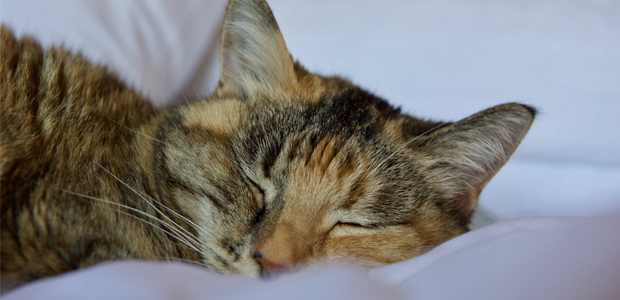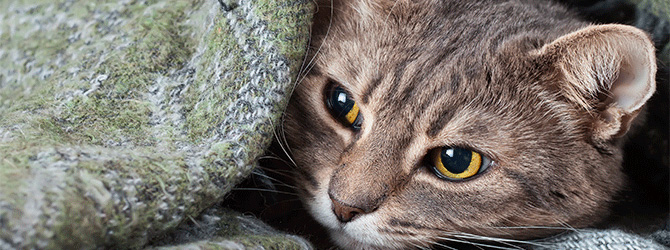Feline calicivirus: causes, symptoms and treatments
First Published: 21/02/2019
Last Updated: 10/02/2023
Feline calicivirus (FCV) is a condition of the upper respiratory tract that causes flu-like symptoms in cats and kittens. Infection with FCV ranges from mild to severe, and infected cats can go on to develop potentially serious complications such as pneumonia.
What is Feline Calicivirus
FCV is a relatively common virus that can affect cats of all ages, genders and breeds, though young kittens and cats with a weakened immune system are most at risk.
The FCV virus is prone to mutate, which means there are lots of different strains of the infection, with some strains more dangerous than others.
FCV causes acute upper respiratory infections (known as URIs) in cats. The signs of URIs are similar to what you might expect if your cat caught a common cold. Symptoms of URIs include sneezing, conjunctivitis, lethargy and oral ulcers.
Identifying the signs and symptoms of feline calicivirus
Different strains of FCV cause different symptoms, the most common of which include:
- Fever
- Mild conjunctivitis
- Ulcers on the mouth and tongue
- Loss of appetite
- Sneezing
- Lethargy
- Depression
Infection with FCV ranges from mild to severe, and infected cats can go on to develop potentially serious complications such as pneumonia.
How is FCV spread
Due to its highly infectious nature, FCV can be spread in the following ways:
- Directly between cats - when they come into contact with other cats it can be transmitted through the eyes, nose or mouth
- Sharing food and water bowls
- Using the same litter tray
- Humans stroking cats and not washing their hands
Any objects that an infected cat comes into contact with should be cleaned and disinfected regularly to prevent the virus from spreading. This includes things like their bowls, brushes and bedding.

Is my cat at risk of calicivirus?
As it is a common virus, your cat could well catch FCV if they are left unvaccinated. Although vaccination may not prevent the initial infection of calicivirus, it will greatly reduce the severity of the disease.
Like many infections, calicivirus can get into your cat’s body through the eyes, nose or mouth, often through direct contact with an infected cat or environment.
It’s possible for a cat to suffer from feline calicivirus more than once – even if they’ve previously been vaccinated against it.
Can FCV lead to other problems?
As FCV is a major cause of URIs, it can lead to other problems in your cat or kitten if it is left untreated.
As well as experiencing the symptoms of URIs (also known as cat flu) such as sneezing, discharge from the eyes and nose and oral ulcers, FCV has also been known to cause limping.
Liming and lameness due to FCV are most commonly seen in kittens and may sometimes occur after their first vaccination.
Always check with your vet if you think your cat or kitten is displaying any symptoms following their vaccinations.
Can FCV be asymptomatic?
A cat that shows no signs of carrying disease may still be carrying FCV, which means that your cat or kitten could be exposed to the infection when they interact with non-symptomatic cats that appear healthy.
Due to the infectious nature of FCV, if you have cats that live in the same house, the virus can circulate. This can lead to reinfection, either through contact with an infected cat or via contaminated surfaces and objects.
Want advice on calicivirus in cats?
For advice, diagnosis and treatment of feline calicivirus, contact your local vet.
Find your nearest vet using our Find a Vet page, or speak to a vet online using Online Vets.


